James Kyle – 1833
WANTED: LOOKING TO PURCHASE LOCK ASSOCIATED WITH THESE KEYS OR OTHER LOCKS BY JAMES KYLE
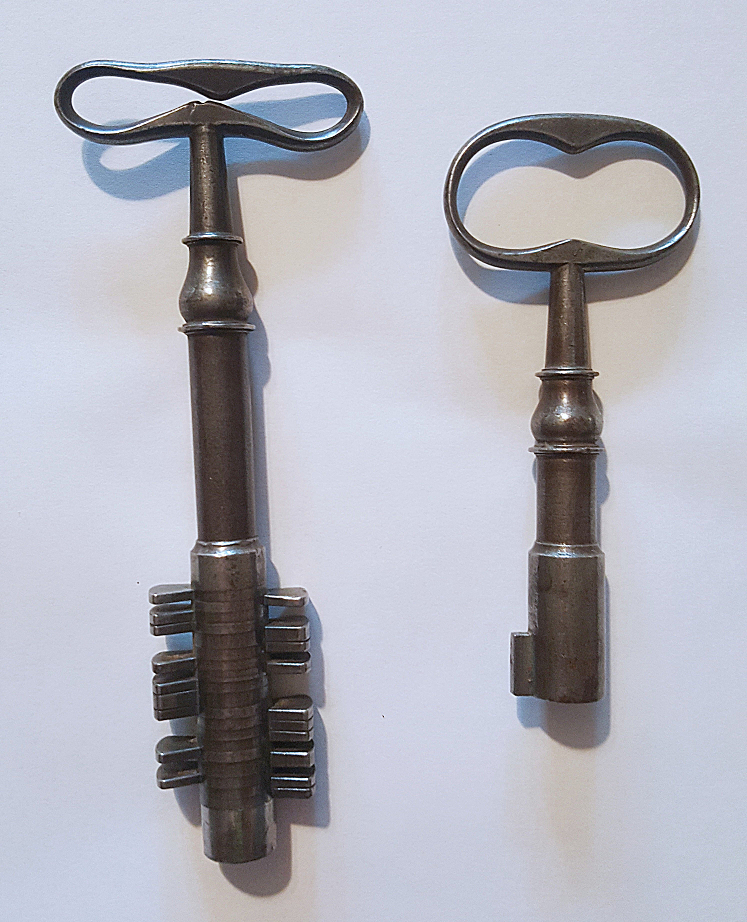
James Kyle 1833 Changeable Bit Keys 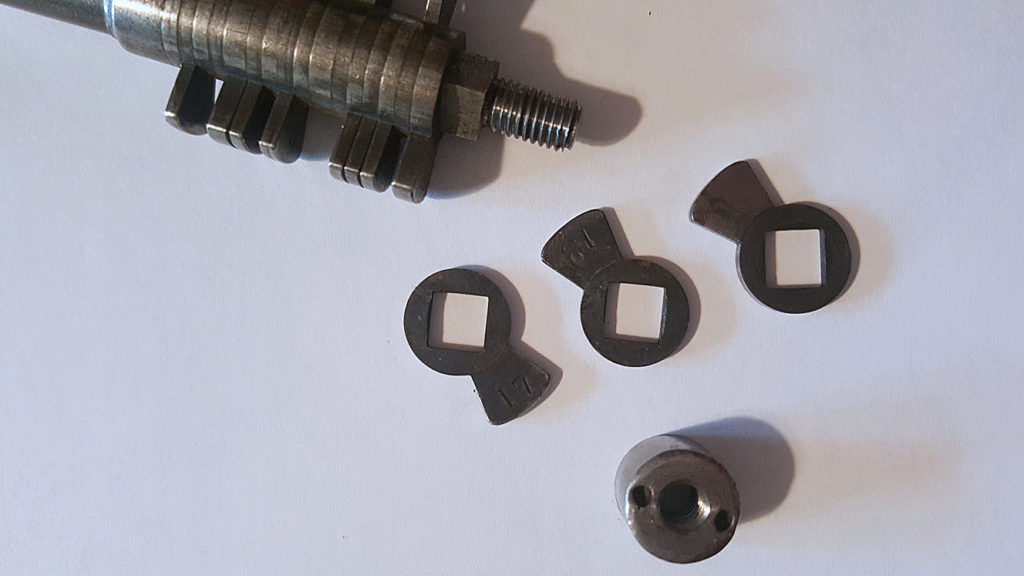
James Kyle 1833 Changeable Bit Key Bits 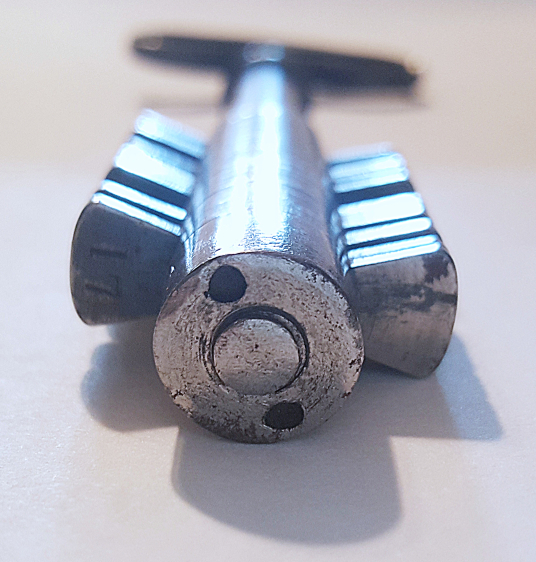
James Kyle 1833 Changeable Bit Key Bottom View 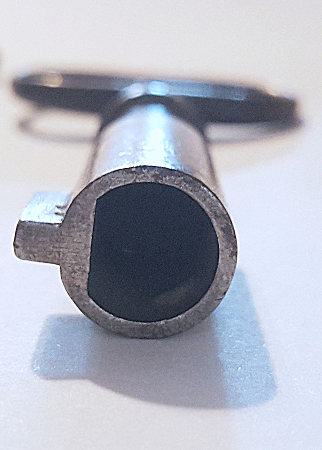
James Kyle 1833 Wrench Bottom View
James Kyle held four lock patents:
X7068 – May 18, 1832
X7758 – September 16, 1833 – This is a re-issue of X7068
X7759 – September 16, 1833
5708 – August 15, 1849
Unfortunately, due to the patent fires of 1836, a copy of X7068 and X7759 have not been located. A copy of the image from X7759 has been located, but it is identical to X7758. Since X7758 is a re-issue of X7068, it is safe to assume they are essentially the same as the re-issue was done to provide greater clarity and details missing from the original. Based on the Volume 13 of the Franklin Institute Journal from 1834, X7759 eliminated the reliance on gravity to reset the levers, but a complete description is currently unavailable. Reading through patent X7758, it reads like this improvement was incorporated in X7758, thus I suspect that X7758 and X7759 are identical, with the pretense of X7758 to re-issue X7068 and the pretense of X7759 to document the improvements. The keys above are in alignment with those shown in X7758 which is fortunately the patent for which a copy still exists. This patent will be the focus of this text.
The keys shown above represent the only known surviving pair of keys from this patent. A few examples of the changeable bit key are known, but no other complete pairs are known at the current time. Unfortunately, no known examples of the lock are currently known.
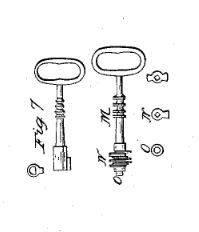 | 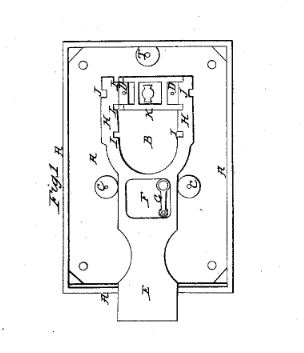 |
The left image shows the two keys from the patent matching the keys photographed above. The right image shows the internals of the lock from the patent. For those interested in the more minute, technical details of the patent, it is hyperlinked above. In short, the bits, N in Figure 7, interact on the “sliding pieces usually made of steel plates,” K in Figure 1, to allow the other key in Figure 7 to act on the tumbler and throw the bolt when the correct changeable bit key is utilized. The original version of this lock (patent X7068) utilized levers which relied upon gravity to reset, but the lock from this patent improved upon that by eliminating the reliance on gravity with these sliding pieces.
The bits of this key can be changed in order and direction. The bits can also be made to different lengths and thicknesses (the example above is all the same length, but varies in thickness). Each bit and sliding plate are numbered to match. By changing the bits and the sliding plates to match the new key configuration, a near infinite (enough to eliminate breaking into the lock by guessing the combination) number of permutations can be achieved. The key above has 19 bits, allowing for 19! combinations (ignoring that each bit could possibly be aligned up or down)…That’s 121,645,100,408,832,000 different possibilities (in theory. In reality, some of the levers/bits are probably the same or similar enough such that the total number of possible arrangements is reduced, likely significantly). A keen reader will note, this lock actually pre-dates Solomon Andrews changeable bit key lock invented in 1836 by almost 4 years. It turns out, you really can’t believe everything you read on the internet and in books. Re-keying is commonly attributed to Solomon Andrews, but in reality James Kyle first utilized this concept!